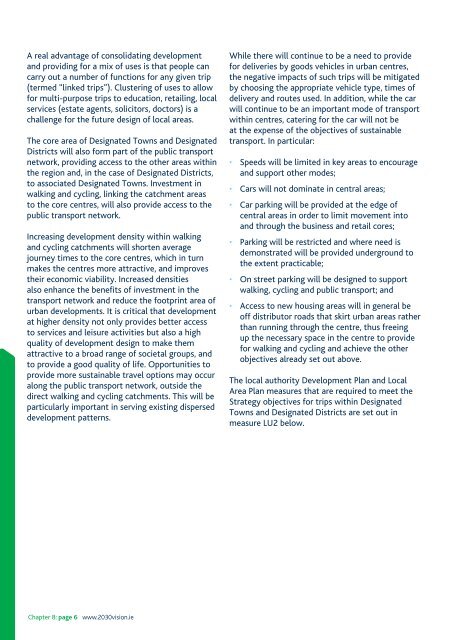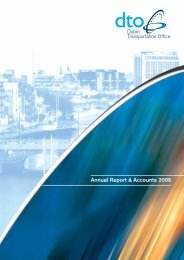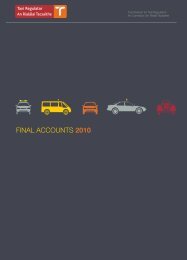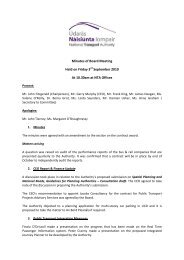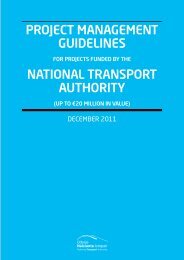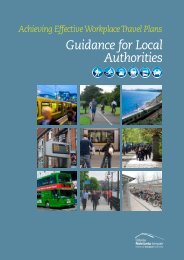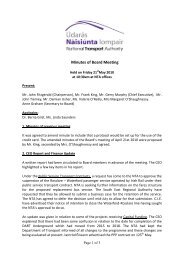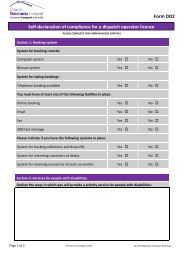Greater Dublin Area Draft Transport Strategy 2011-2030
Greater Dublin Area Draft Transport Strategy 2011-2030
Greater Dublin Area Draft Transport Strategy 2011-2030
- No tags were found...
You also want an ePaper? Increase the reach of your titles
YUMPU automatically turns print PDFs into web optimized ePapers that Google loves.
A real advantage of consolidating developmentand providing for a mix of uses is that people cancarry out a number of functions for any given trip(termed “linked trips”). Clustering of uses to allowfor multi-purpose trips to education, retailing, localservices (estate agents, solicitors, doctors) is achallenge for the future design of local areas.The core area of Designated Towns and DesignatedDistricts will also form part of the public transportnetwork, providing access to the other areas withinthe region and, in the case of Designated Districts,to associated Designated Towns. Investment inwalking and cycling, linking the catchment areasto the core centres, will also provide access to thepublic transport network.Increasing development density within walkingand cycling catchments will shorten averagejourney times to the core centres, which in turnmakes the centres more attractive, and improvestheir economic viability. Increased densitiesalso enhance the benefits of investment in thetransport network and reduce the footprint area ofurban developments. It is critical that developmentat higher density not only provides better accessto services and leisure activities but also a highquality of development design to make themattractive to a broad range of societal groups, andto provide a good quality of life. Opportunities toprovide more sustainable travel options may occuralong the public transport network, outside thedirect walking and cycling catchments. This will beparticularly important in serving existing disperseddevelopment patterns.While there will continue to be a need to providefor deliveries by goods vehicles in urban centres,the negative impacts of such trips will be mitigatedby choosing the appropriate vehicle type, times ofdelivery and routes used. In addition, while the carwill continue to be an important mode of transportwithin centres, catering for the car will not beat the expense of the objectives of sustainabletransport. In particular:• Speeds will be limited in key areas to encourageand support other modes;• Cars will not dominate in central areas;• Car parking will be provided at the edge ofcentral areas in order to limit movement intoand through the business and retail cores;• Parking will be restricted and where need isdemonstrated will be provided underground tothe extent practicable;• On street parking will be designed to supportwalking, cycling and public transport; and• Access to new housing areas will in general beoff distributor roads that skirt urban areas ratherthan running through the centre, thus freeingup the necessary space in the centre to providefor walking and cycling and achieve the otherobjectives already set out above.The local authority Development Plan and Local<strong>Area</strong> Plan measures that are required to meet the<strong>Strategy</strong> objectives for trips within DesignatedTowns and Designated Districts are set out inmeasure LU2 below.Chapter 8: page 6 www.<strong>2030</strong>vision.ie


